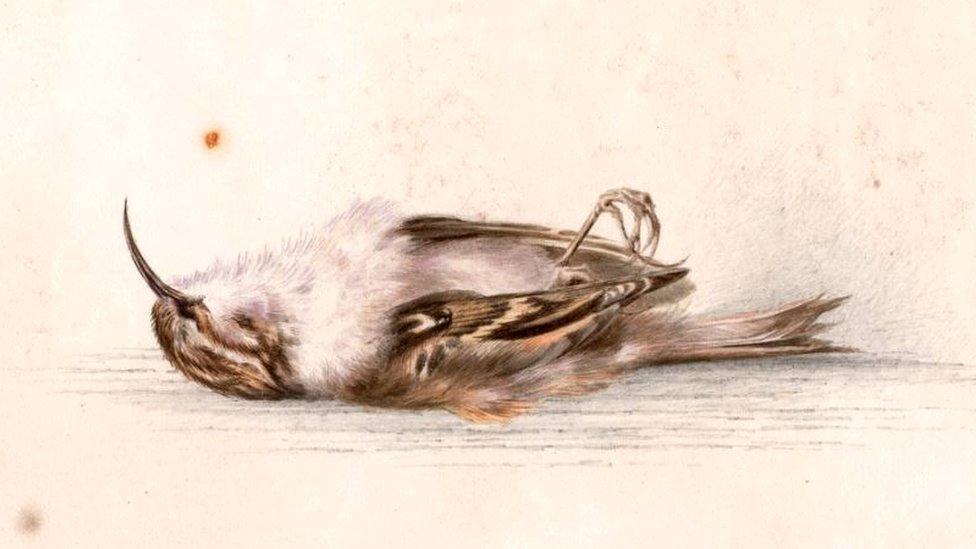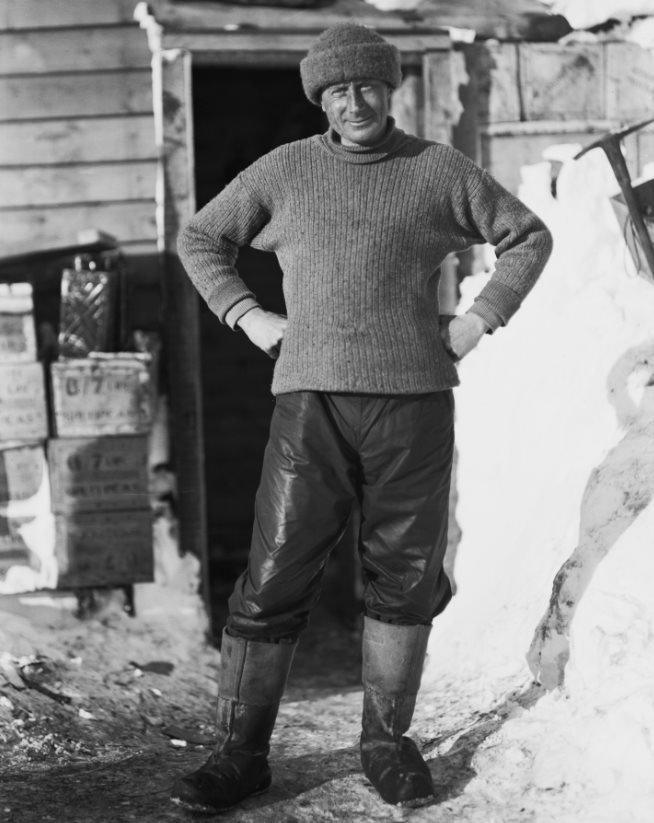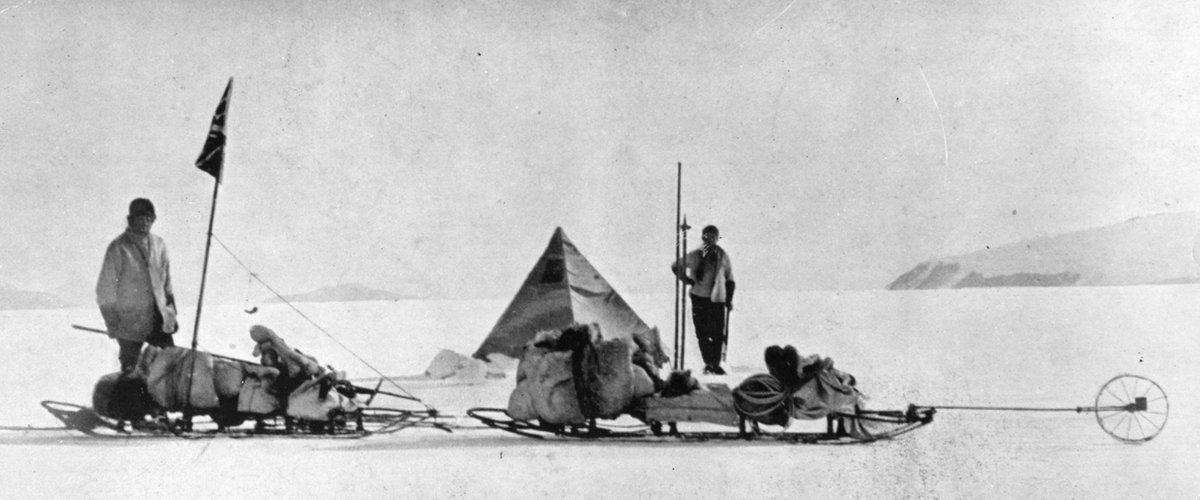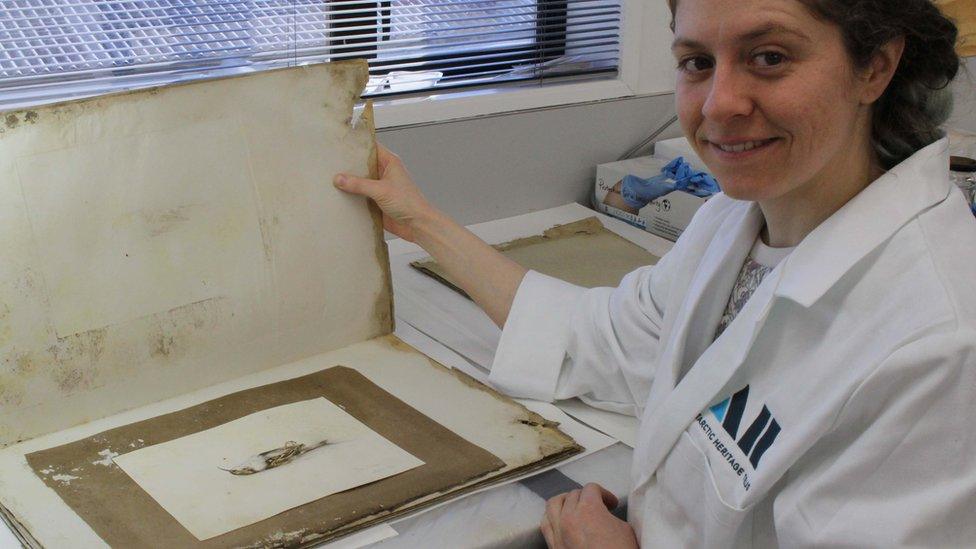Painting from Scott expedition discovered in Antarctica
- Published

The mystery of a beautifully painted watercolour of a dead bird that was found in Antarctica's oldest building has been solved.
The painting of a Tree Creeper was in a hut built by Norwegian explorers and later used by the Scott expedition.
The image was found in a pile of papers covered in mould and penguin excrement.
It is believed to be by British scientist Dr Edward Wilson, who died on the ill-fated Scott expedition to the South Pole in 1912.
Antarctic Heritage Trust paper conservator Josefin Bergmark-Jimenez described the find as the greatest moment in her career.
''There was this gorgeous painting, I got such a fright that I jumped and shut the portfolio again. I then took the painting out and couldn't stop looking at it - the colours, the vibrancy, it is such a beautiful piece of work."
"I couldn't believe it was there."

The huts on Cape Adare were built by Norwegian explorers
The discovery was actually made last year but has been kept secret so that conservators could restore some 1,500 other artefacts from two huts built by Norwegian explorers in Cape Adare in 1899.
The painting is labelled 1899 Tree Creeper and has the initial T on it.
At first conservators could not identify the artist, but Ms Bergmark-Jimenez attended a lecture on Dr Wilson and realised it was him as soon as she saw his other artwork.

Edward Wilson died alongside Robert Falcon Scott on the way back from the South Pole
''I saw his distinctive handwriting, I knew he had painted the Tree Creeper. This made sense as there was also a 1911 newspaper article about Scott's party that went to Antarctica via New Zealand [in the bundle of papers]."
Dr Wilson was born in 1872 in Cheltenham, England, where an art gallery and museum are named after him and display permanent collections of his work.
His bronze statue, designed by Scott's widow Lady Kathleen Scott, also stands outside the town's municipal buildings. A primary school in Paddington, London, also bears his name.

Dr Wilson (L) and Captain Scott at the furthest point south
Antarctic Heritage Trust's Lizzie Meek says Dr Wilson was a remarkable man.
''He was not only a talented painter, but a scientist and a medical doctor who was an integral member of both of Scott's expeditions to the ice."
Conservator Josefin Bergmark-Jimenez explains why the painting is in such pristine condition.
''Water colour paintings are particularly susceptible to light so the fact this work has spent more than 100 years tightly packed between other sheets of paper in completely dark and cold conditions is actually an ideal way to store it."

The painting was amongst a pile of papers covered in mould and penguin excrement
It is still not known how the painting ended up in the hut as Tree Creepers are from the Northern Hemisphere.
"It's likely that Wilson painted it while he was recovering from tuberculosis in Europe."
But the bird will never make the flight back north, as all artefacts must be returned to the hut following conservation, in accordance with the site's status as an Antarctic Specially Protected Area.
A high-quality reproduction of the painting has been made at the Canterbury Museum in Christchurch before the watercolour is returned to its final resting place back on the ice continent.
- Published20 May 2017

- Published13 January 2017

- Published15 December 2016
